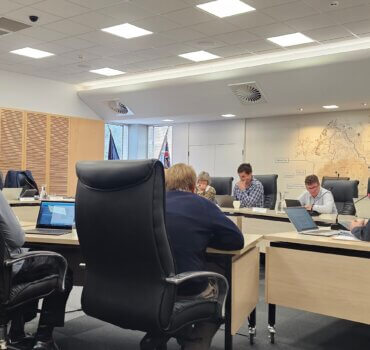
Mike Montgomerie, pictured centre with glasses at a recent meeting, wonders about the rural representation proposed for Waipā. Photo: Mary Anne Gill.
It’s a tale of two councils – Waipā and Waitomo.
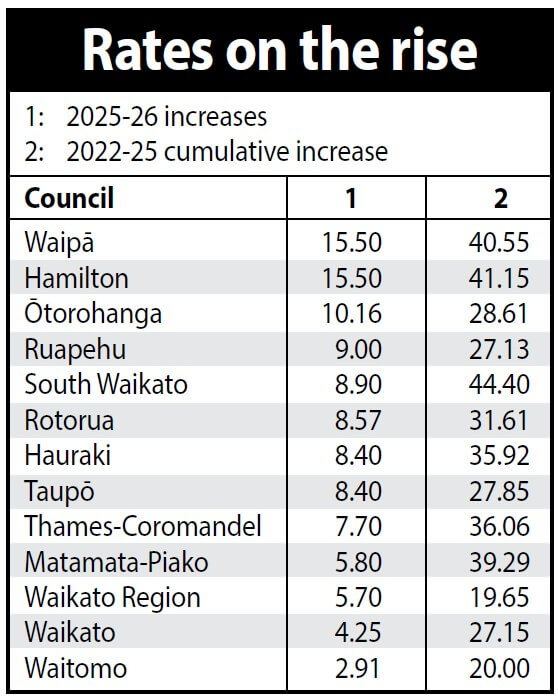
Rates on the Rise
One ranks third-highest in the country for rate increases at 15.5 per cent, while the other sits near the bottom at just 2.91 per cent.
The stark contrast in performance has prompted calls from the Waikato Chamber of Commerce for council amalgamations to spread costs and keep rates in check.

Don Good
Waikato Chamber chief executive Don Good said the 20-44 per cent increases “beggars belief” and would significantly affect voter sentiment in the upcoming local body elections.
Mayors Susan O’Regan (Waipā) and John Robertson (Waitomo), lead councils that have faced three years of unprecedented financial challenges, including high inflation, ageing infrastructure, water reforms and soaring debt.
Waipā has cut nearly $200 million of costs out of its Long Term Plan in a bid to find savings.
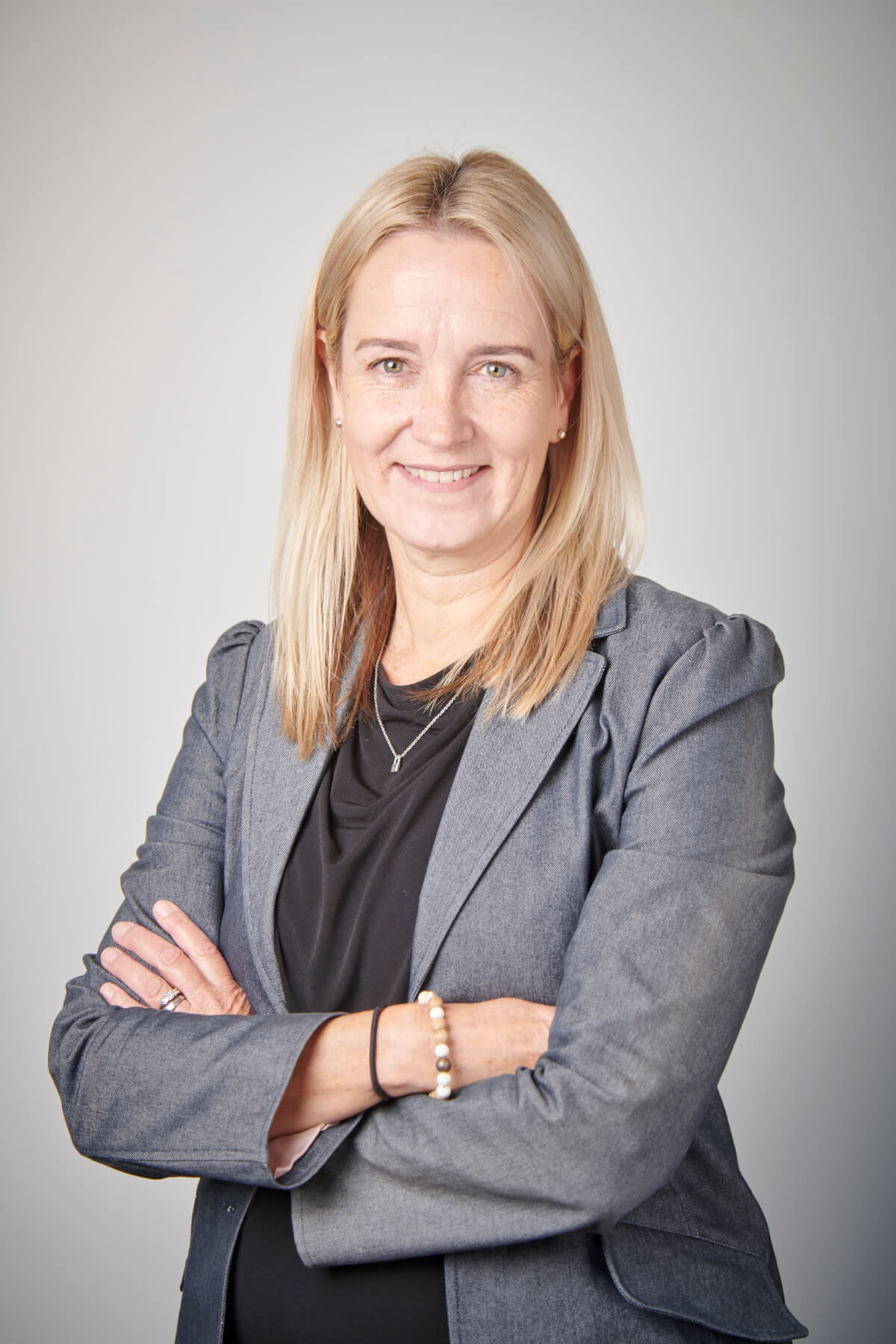
Susan O’Regan
But O’Regan says the issue goes beyond individual councils.
“It’s bigger than that, it’s looking at the whole of this sector and how it is structured and funded and where those shortcomings are,” said O’Regan.
“Anybody that promises rate suppression really fails to understand the situation we’re in as a sector and as a country around the need for infrastructure renewal.”
According to the Taxpayers’ Union, the average council rates increase across New Zealand for 2025 is 8.39 per cent, while Waipā’s three-year cumulative increase of 40.55 per cent is described as “staggering and unsustainable.”
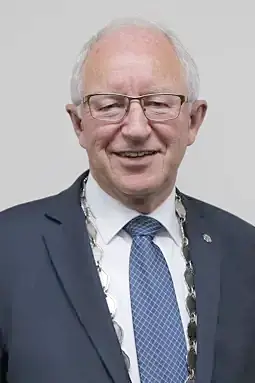
John Robertson
Local Government campaigns manager Sam Warren said councils like Waipā, Hamilton and Waikato used growth as a smokescreen to justify excessive spending and pass the burden onto ratepayers.
“Councils are gaslighting those already struggling to get by,” he said.
Robertson sees the upcoming water reforms as a catalyst for necessary mergers, particularly between Waitomo and Ōtorohanga.
“When we lose water, we lose 20-25 per cent of our business. You can’t keep the overheads.”

Sam Warren
Waitomo, once one of the most debt-ridden councils in the country, is projected to have similar debt levels to Ōtorohanga, making amalgamation a practical necessity.
Robertson, a former member of Parliament, mayor of Papakura and local government commissioner acknowledged the government’s water reforms could be seen by some councils as “mergers by stealth.”
O’Regan said councils would need to reassess their situations next term.
Waipā is likely to transfer its drinking and wastewater infrastructure to a council-controlled organisation called Waikato Water Done Well comprising Ōtorohanga, Hauraki, South Waikato, Matamata-Piako and Waitomo.
“Water reform will prompt a lot of councils to consider what the future for local government of the rest of council looks like. If that’s not a discussion then you don’t understand what the position is in the sector,” said O’Regan.
“If you’re not prepared to contemplate what local government could look like going forward, you’re misunderstanding the memo.
“You have to look at how we can deliver better and more efficient, cost effective services to our community.”
She cited Waikato Regional Airport and Co Lab – a council-owned initiative to find shared opportunities – as successful examples of collaboration.
“Waikato Water Done well in and of itself is an example of excellent inter district collaboration.
“I would like to think we would be mature enough to have a discussion about how the future of that representation and delivery of services could be created for our collective communities and at the same time not lose that local voice and expression and sense of place.”
Robertson said his council had “stripped back” costs to avoid insolvency, a situation that once led the Productivity Commission to label it the worst-performing council in the country.
Good said the performances of Waitomo and Waikato Regional Council – its 2025 increase is 5.7 per cent and 19.65 per cent over three years – were acceptable premiums for growth.
“Business accepts inflation increases but objects to paying two to three times inflation for the same service.
“Double or even triple above inflation means voters will vote with their wallets for more business like financially prudent candidates,” he said.
“It is time for accountability and real change. This is the year voters need to vote.”
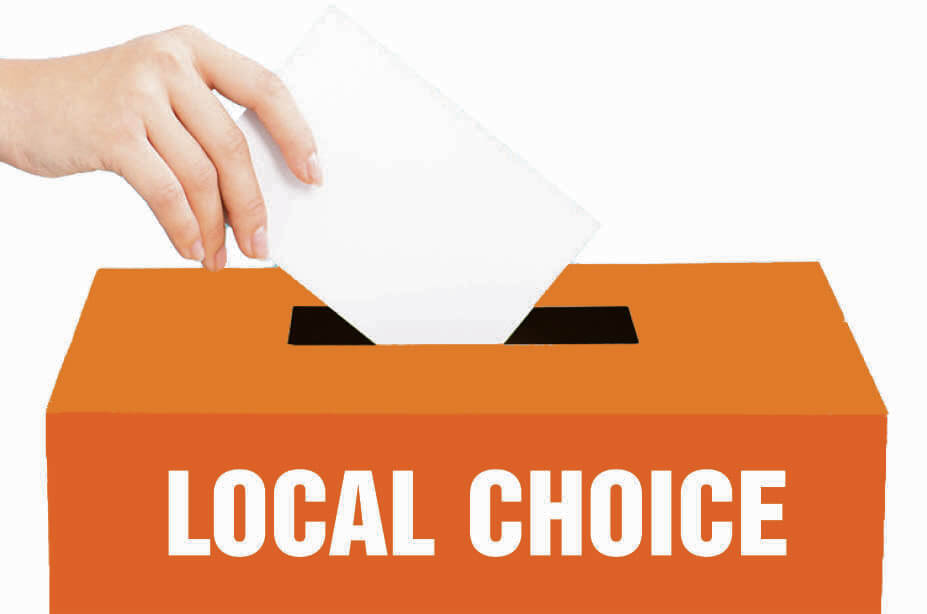
Local Choice








